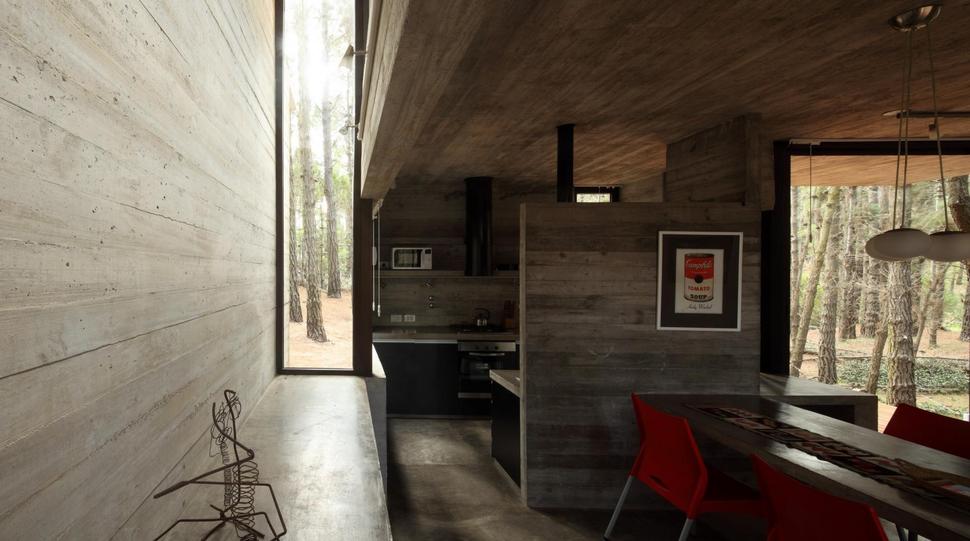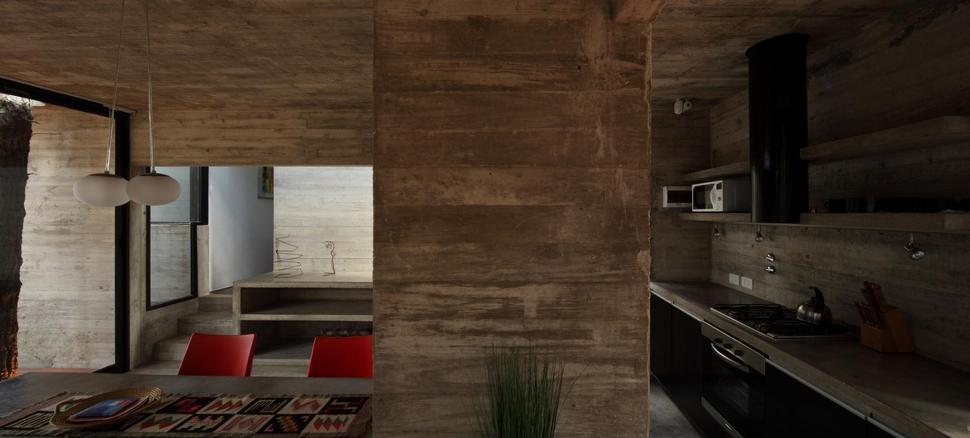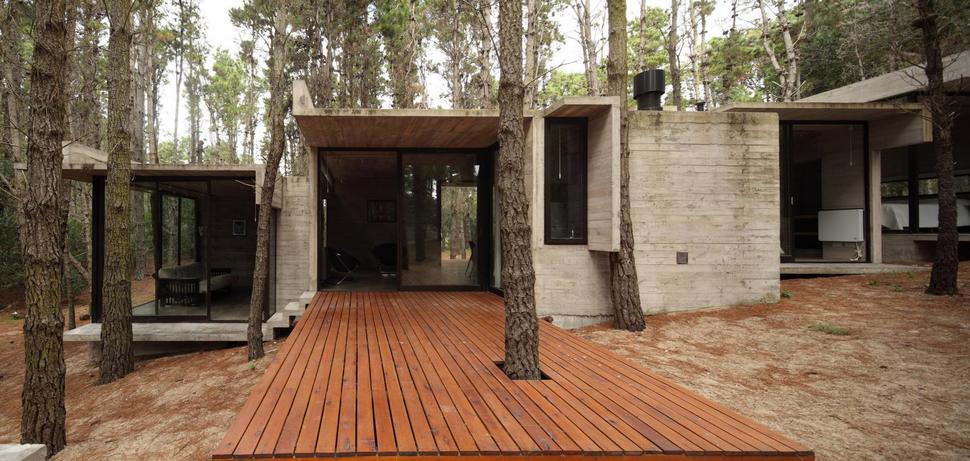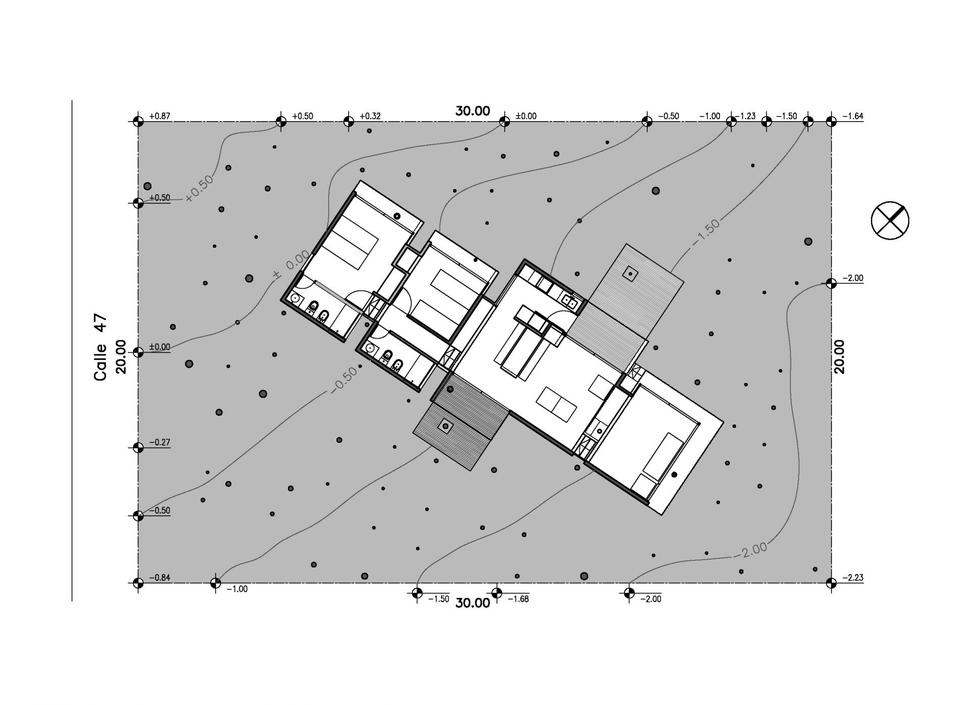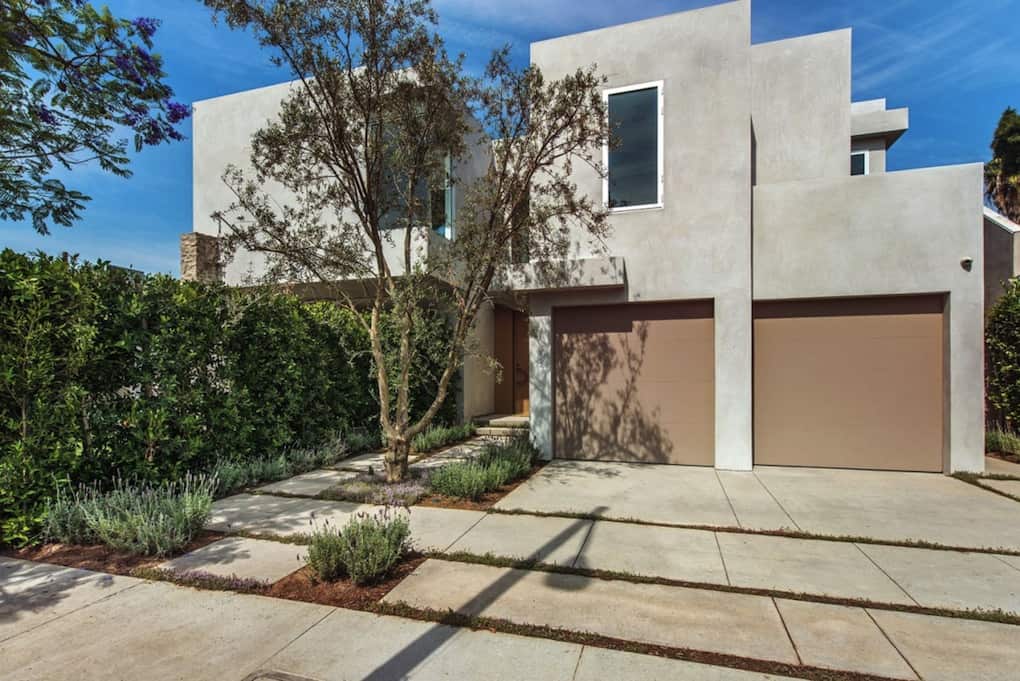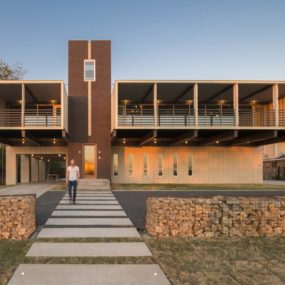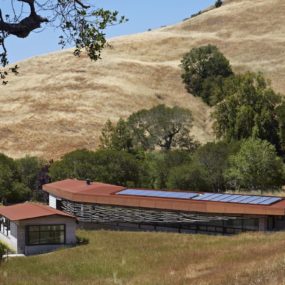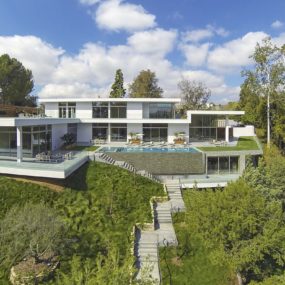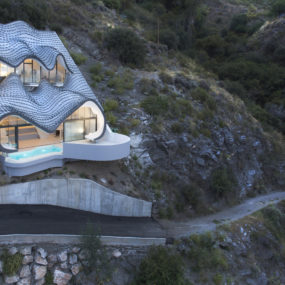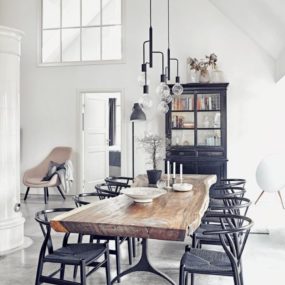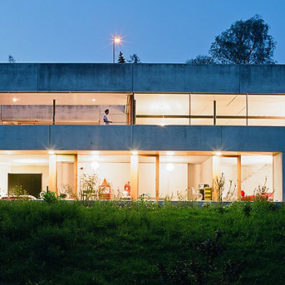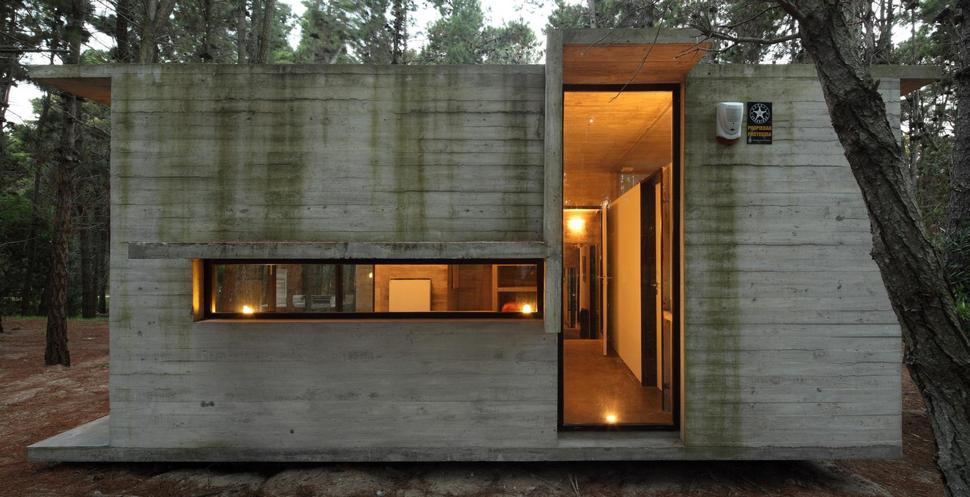
Argentinian studio BAK Arquietctos seem to have specialized in designing and building concrete houses in some unusual locations. This project, located in the maritime woods of Mar Azul, is no exception. The topography of the site somehow imposed the orientation of the building, which follows the natural slope of the land that runs diagonally to the plot.The brief from the owners requested a footprint of approximately 100 square meters and a more relaxed, less conventional shape and layout. They also requested two bedrooms and outdoor spaces to be integrated into the design. The outcome is a pavilion concrete and glass structure that develops diagonally to the site and has four semi-levels. These four semi levels represent modules with very specific functions, and are connected to each other by a flight of three stairs, which make the height difference between one level and the next.The main entrance was created at the level of the dining room module. From there one can circulate upwards to the two bedroom modules or downwards to the sitting area. Two wooden decks have been created on each side of the house, at the level of the living modules. These two platforms seem to anchor the house to the ground and prevent it from sliding down the slope.
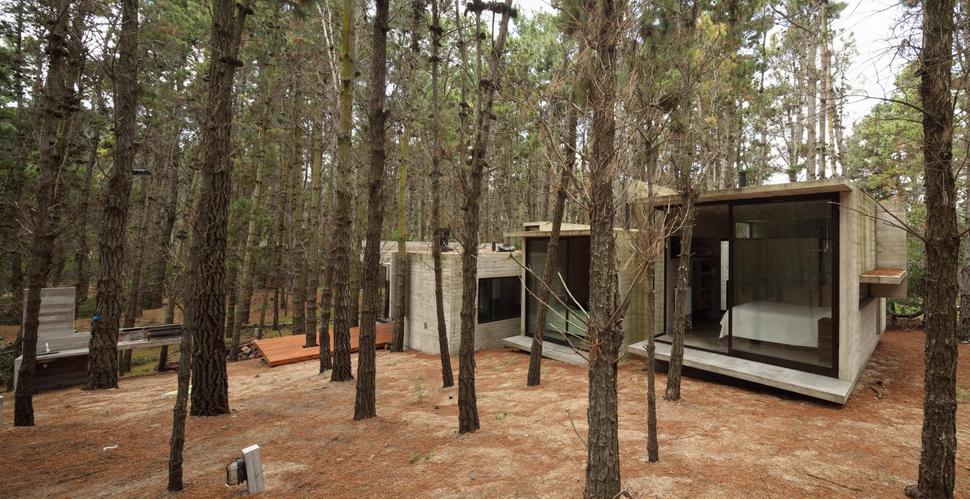
The design aims to integrate the building to the site and to have a minimal impact on it. This is achieved by letting the house follow the natural slope and by using a limited number of materials. The facades are made in concrete formed by wooden planks, which resembles the texture and color of the surrounding trees. The same trees are reflected by the glass surfaces, thus integrating the building into the forest.
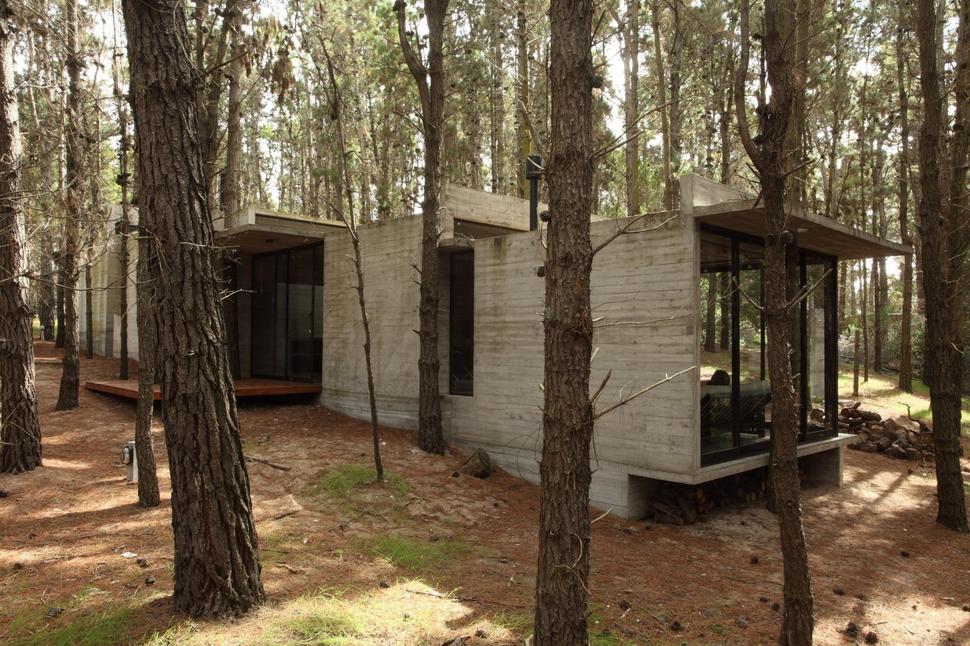
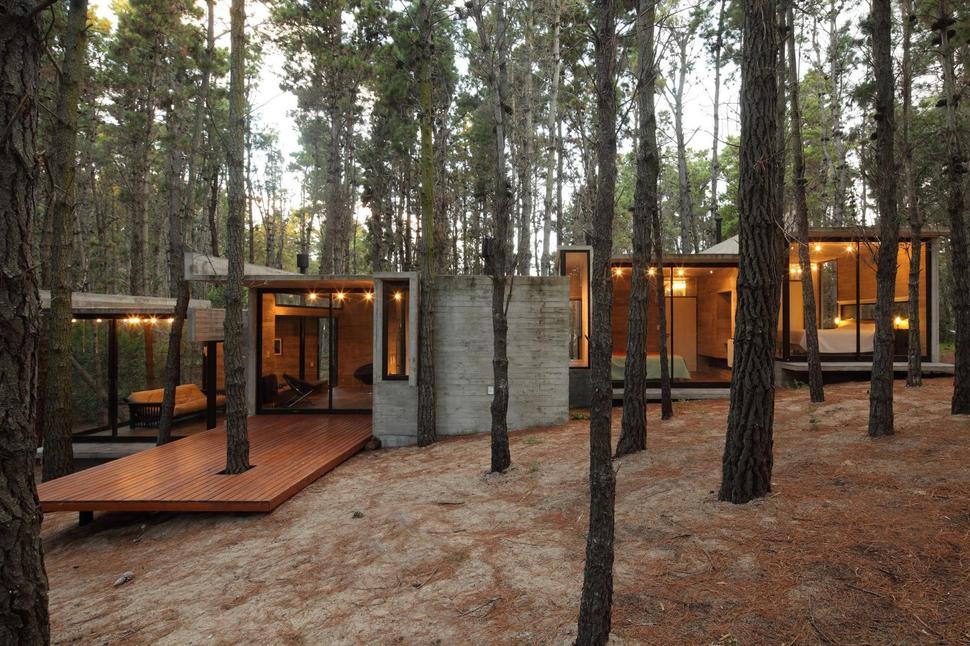
The design integrates the surrounding trees and seems to have been built around them, in a very friendly way and with minimum deforestation.
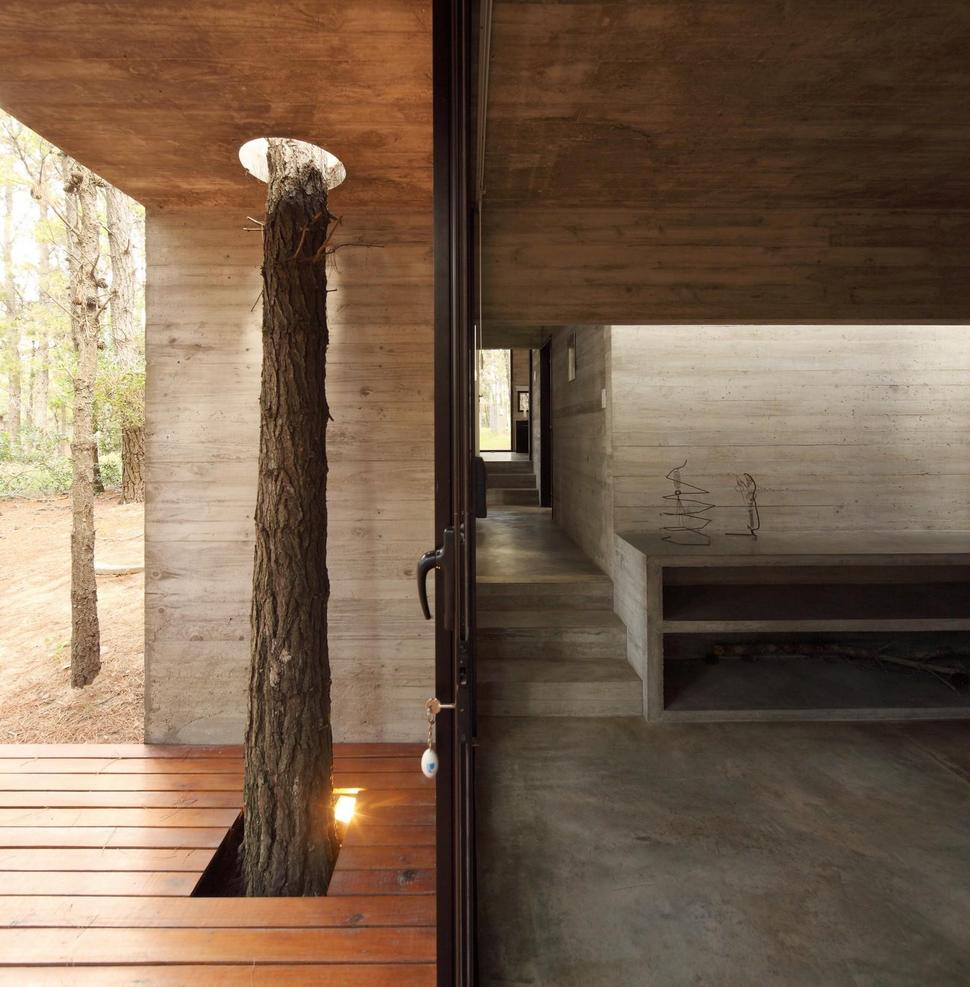
Some tress seem to be leaning against the house, while others simply pierce through the decks and roofs.
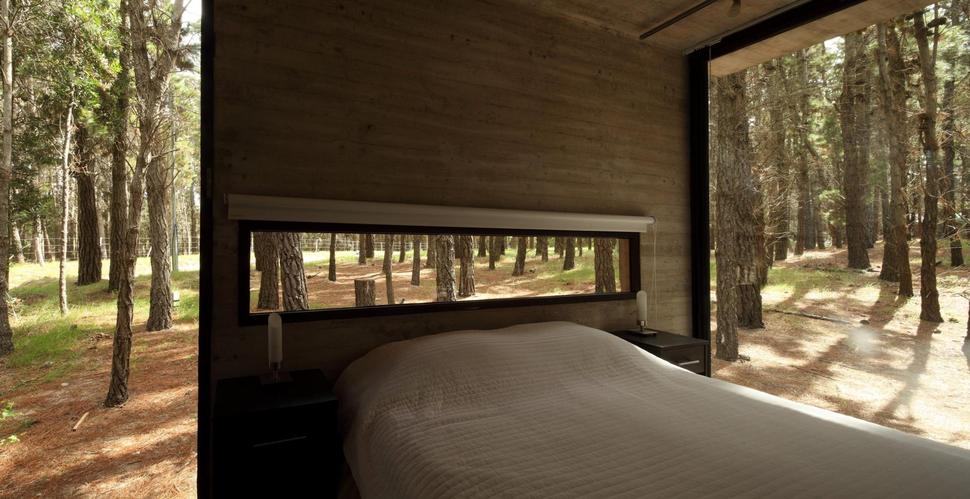
The bedrooms are placed in the two higher modules, towards the back of the house. The bed is framed by floor to ceiling glazed walls and seems to actually be outside in the middle of the forest.
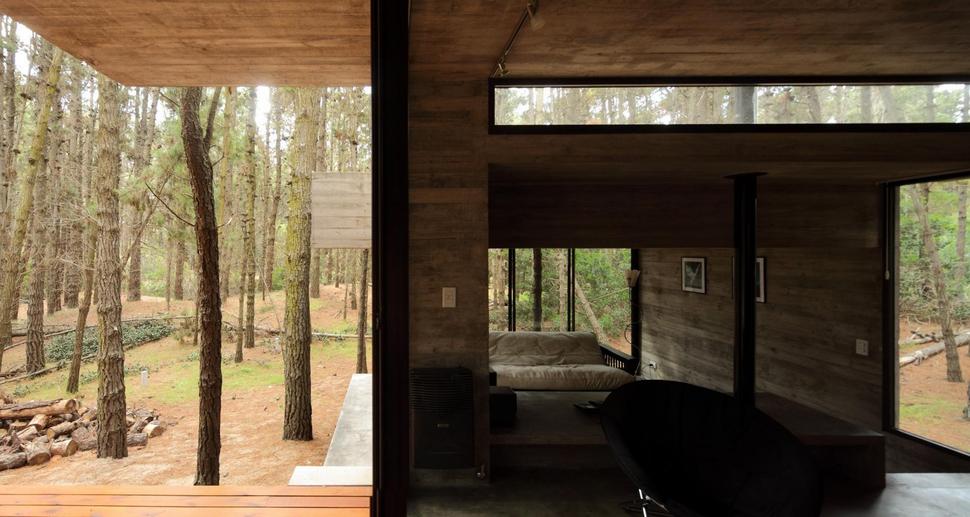

The living area of the house is located in the two lower modules, and has exits on both sides to wooden decks. There is a lot of built-in concrete furniture throughout the house and only a few standalone, mobile pieces.
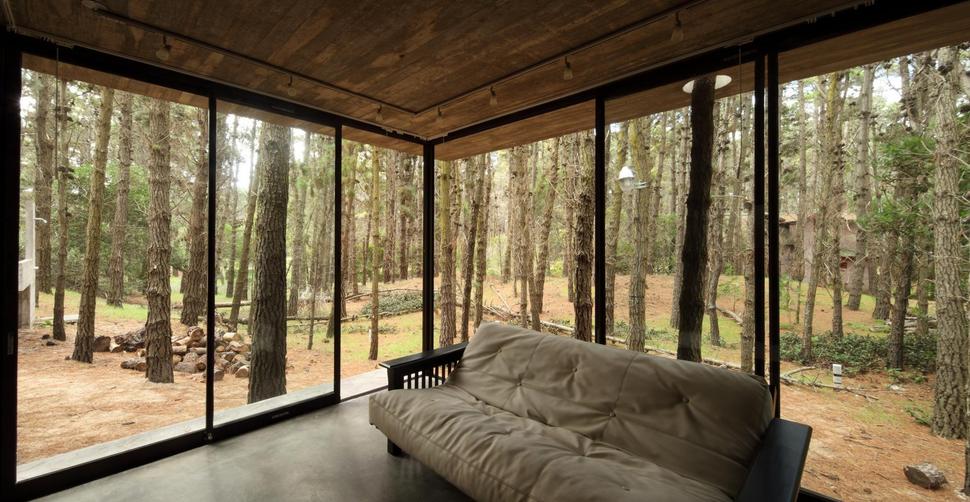
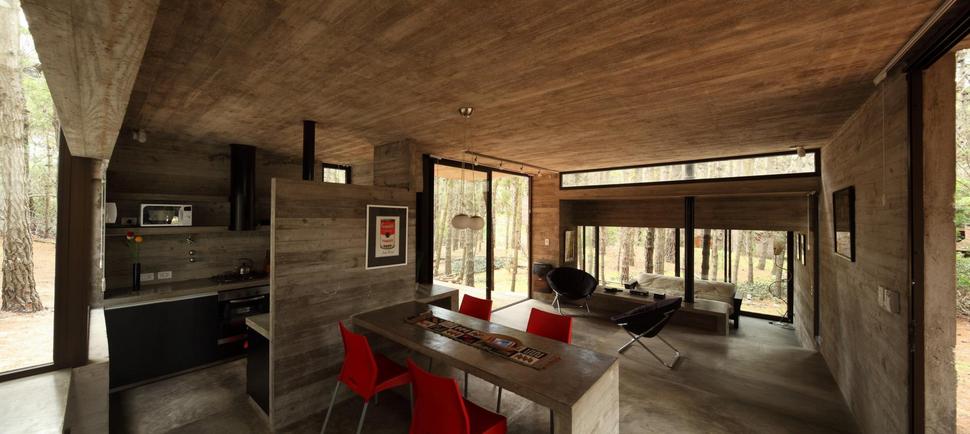
The concrete dining table continues seamlessly from the wall of the kitchen, made from the same material.
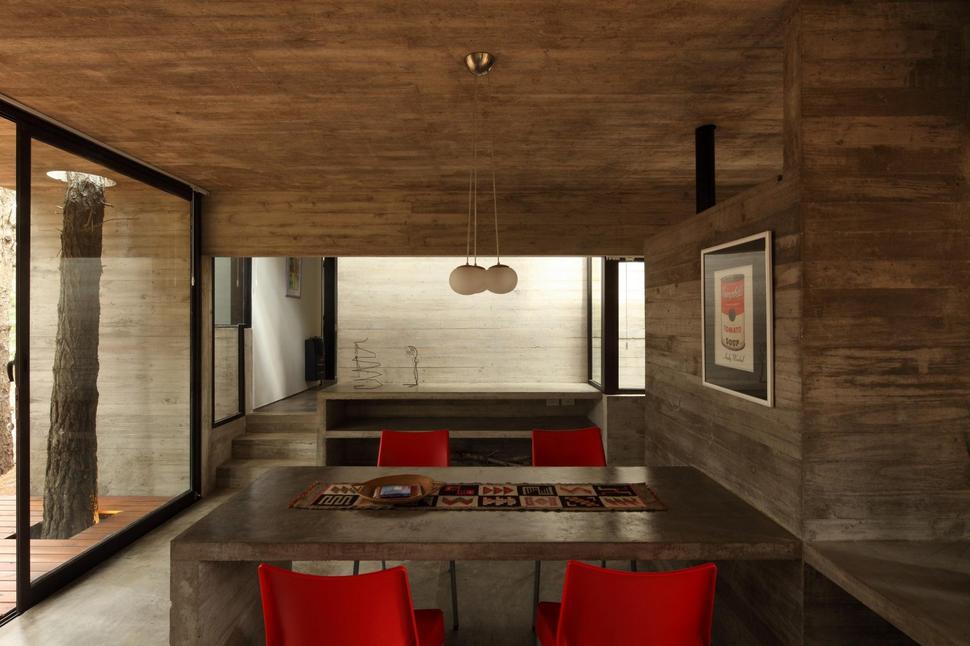
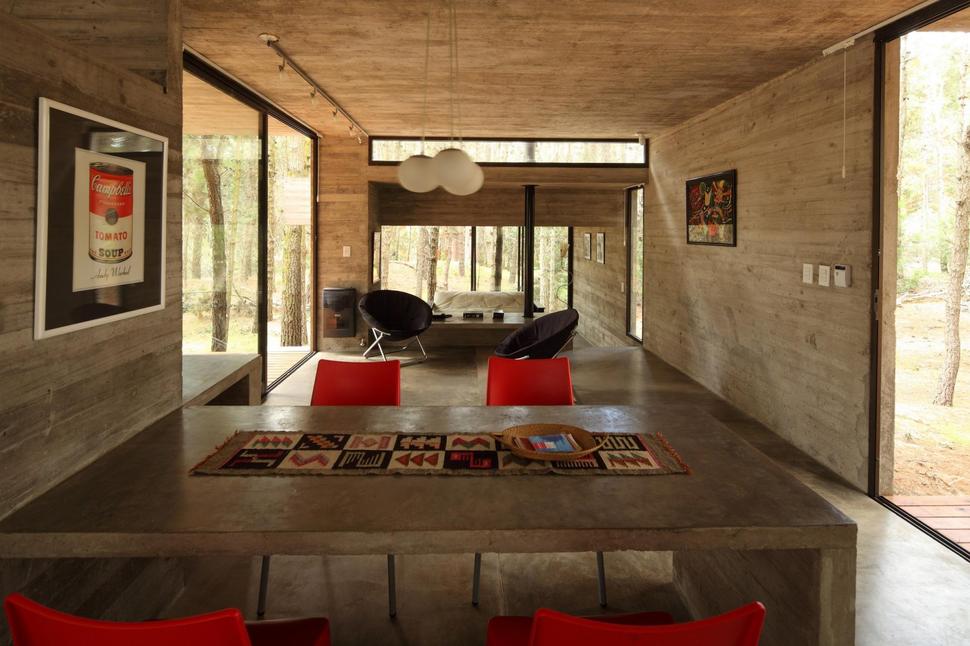
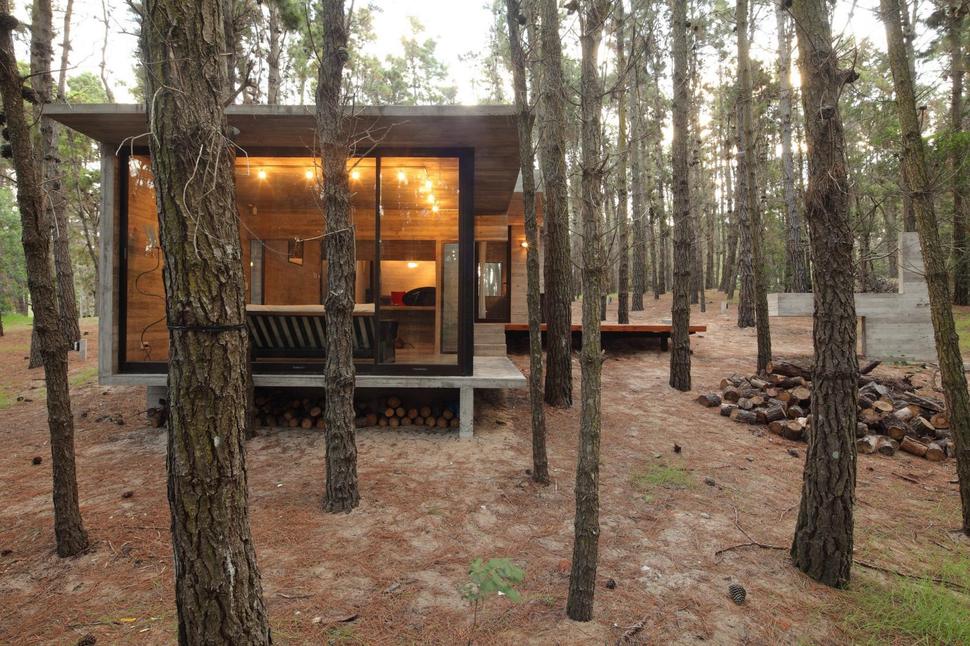
The lowest module ends up with a full surface glass facade that allows to contemplate the forest next to the built in fireplace.
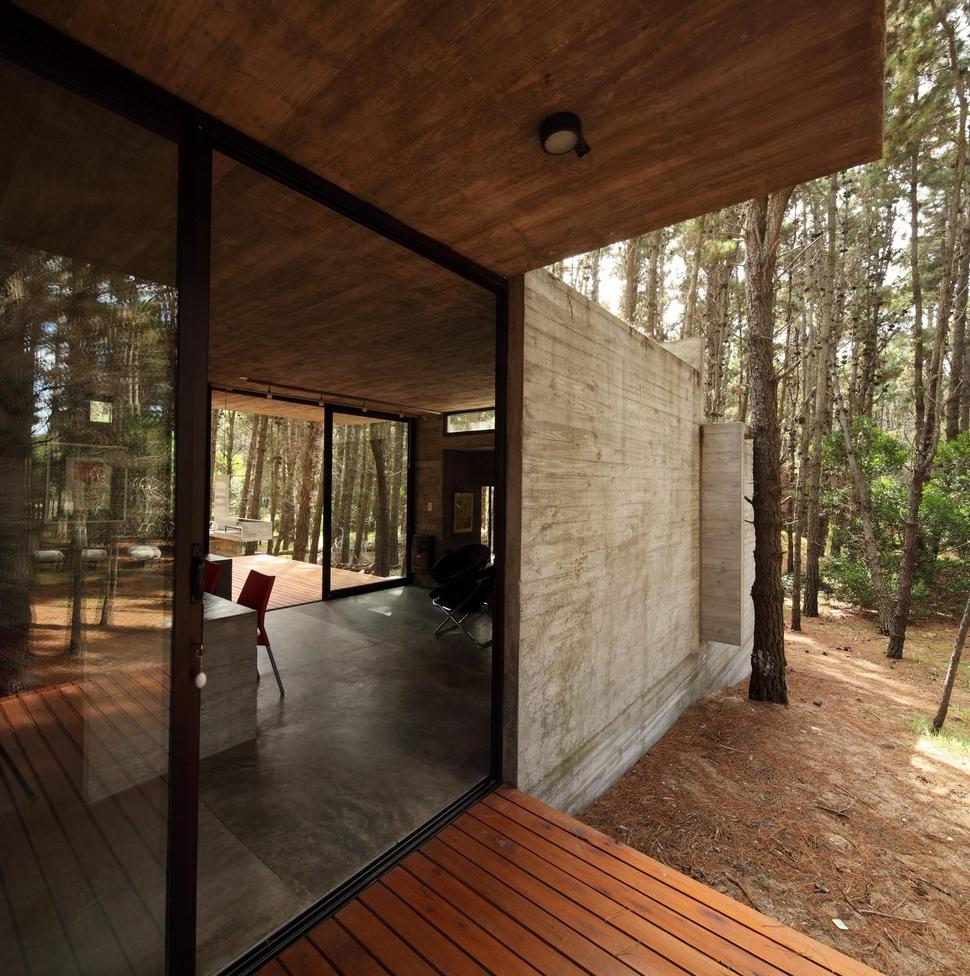
The main entrance is placed at the level of the dining room module, through sliding glass doors.
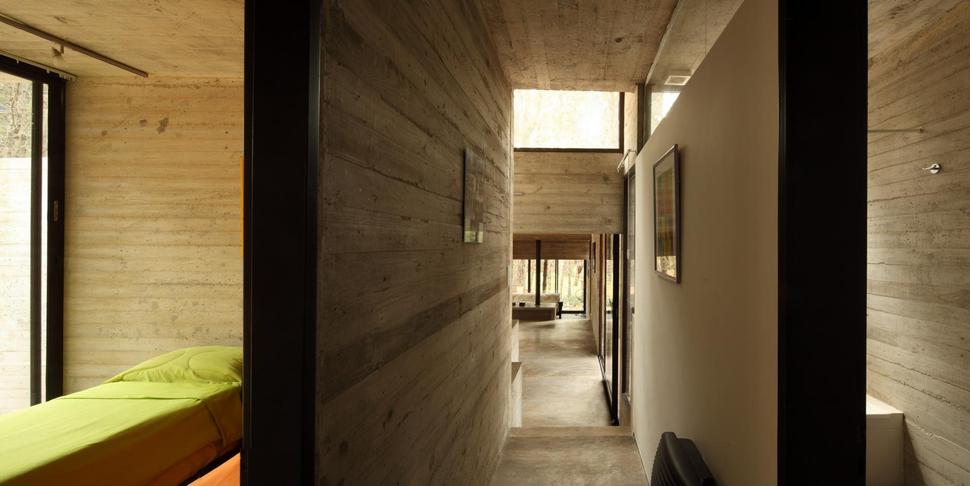
The plank-formed concrete walls are also present on the inside. The few interior walls made in hollows bricks are covered in concrete screed in order to stick to the same concept.
